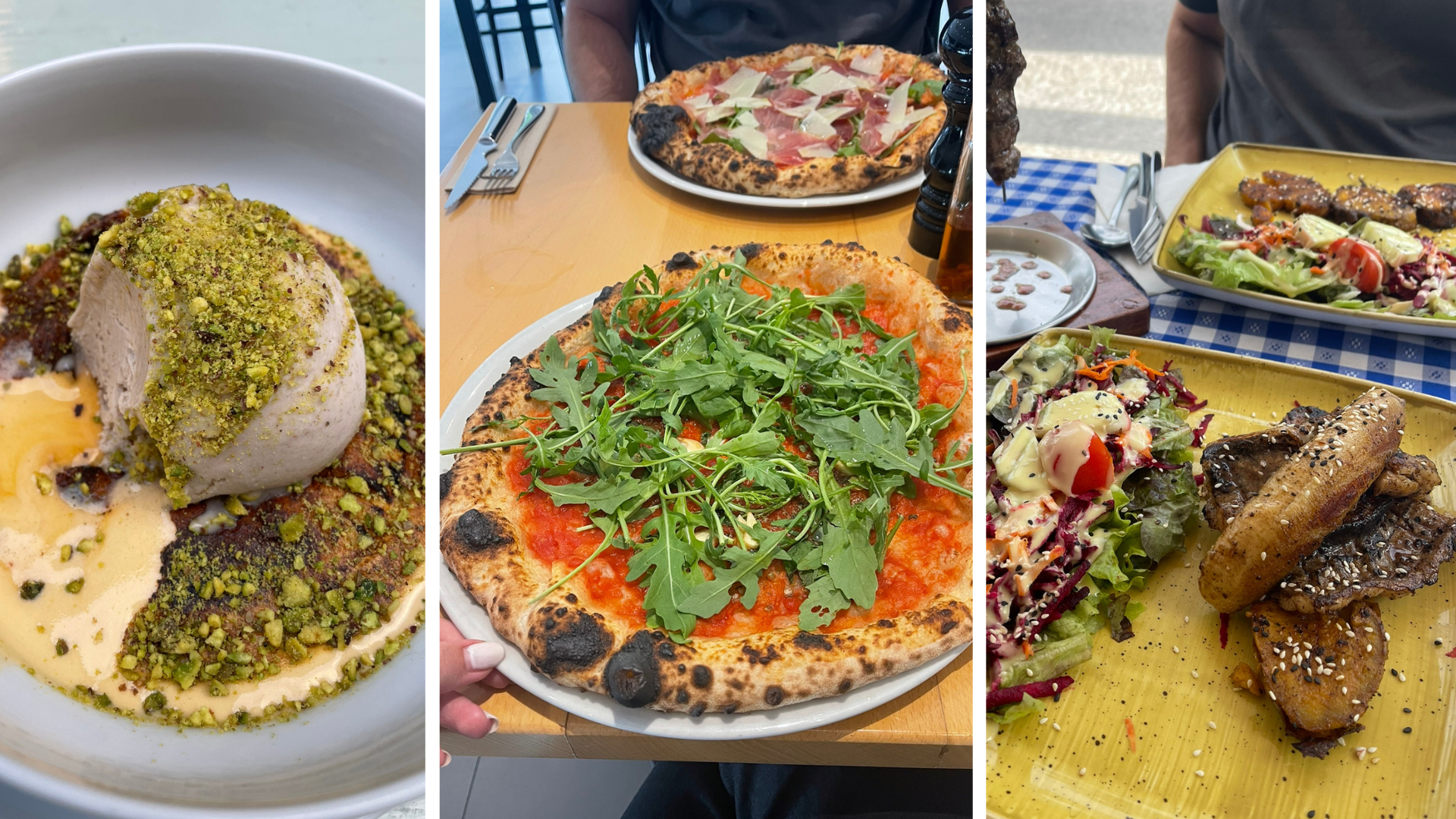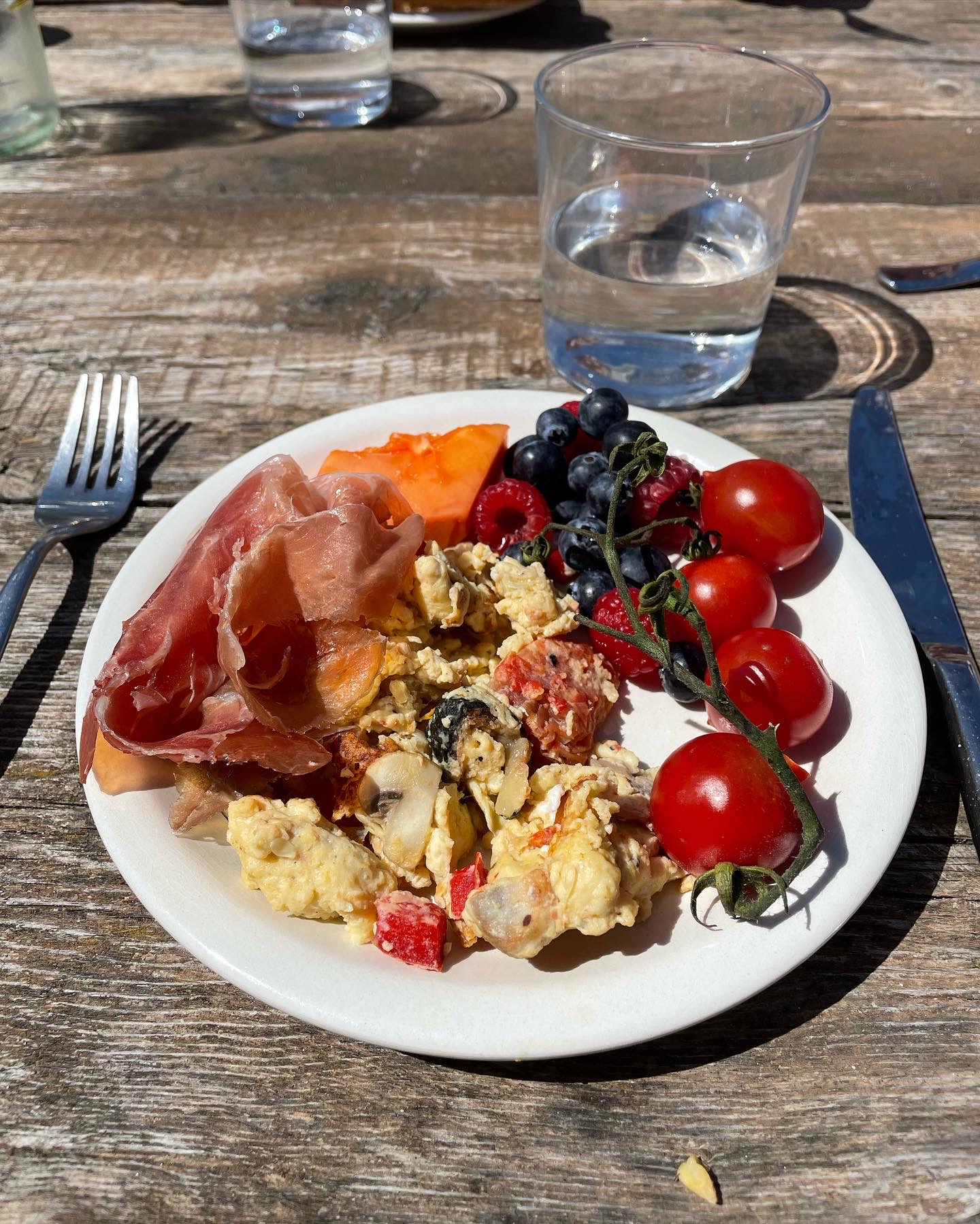SHARE
Maintaining a healthy diet is essential for our overall well-being, and this holds true for managing acne as well. In this blog post, we will explore how to eat healthy and acne-friendly in Europe. By incorporating these tips into your European culinary adventures, you can make informed choices that promote both good nutrition and skin health.
Because let’s be honest – we want to enjoy our European Summer vacay and keep our skin clear at the same time, right?
Here is how to eat healthy in Europe for acne-prone skin…
1. Eat the Local Dishes
Okay, duh. But truly – this is one of the easiest ways to support clear skin. Centre your meals around the local and fresh produce and food the locals would eat!
For example:
- Portuguese staples: fresh fish with fried banana and sweet potato, butternut squash soup
- Spanish staples: pan-fried padron peppers, paella with vegetables
- Greek staples: calamari or prawns with lemon potatoes, Greek salad
One of the best ways to eat healthy and acne-friendly is by indulging in fresh and local produce. Europe is renowned for its vibrant farmers’ markets and bountiful organic offerings (many European countries are glyphosate free – a pesticide that is tough on our gut health and liver and therefore could be contributing to the acne epidemic). Filling your plate with a variety of colourful fruits and vegetables can provide essential nutrients, antioxidants, and fibre, which are beneficial for skin health.
2. Ensure protein at every single meal
Not only is including protein at every meal integral for avoiding “hangry-ness” and preventing cravings, but it is also crucial for keeping your skin clear while on vacation. Protein helps in the repair and regeneration of skin cells, aiding in the healing process of acne. It also supports collagen production to help us get that glow.
Protein-rich foods can help balance blood sugar levels, reducing the likelihood of insulin spikes, which are associated with increased oil production and inflammation. Proteins provide essential amino acids that support various metabolic processes crucial for maintaining healthy skin.
My favourite protein-rich meal hacks for travel:
- Prosciutto and jamon iberico is widely available in Europe, grab a pack for your picnic under the Eiffel tower or add on to a salad.
- Fresh fish is easy to find, especially in Nordic and Mediterranean European countries. Ask for the catch of the day or the local fish option or load up on fish tacos!
- You can’t go wrong with a steak and vegetables.
- Add protein like prawns, chicken or tofu to any salad, pizza or pasta to keep blood sugar stable.
- For snacks, find nuts like almonds, walnuts or aged goat cheddar for quick blood sugar balancing options.
3. Is Gluten Easier to Digest in Europe?
Yup, and here’s why.
- Gluten in Europe may be easier to digest for several reasons. European wheat varieties often contain lower levels of modern hybridization, making them more similar to traditional heritage wheat.
- European baking practices often involve longer fermentation times, which can break down gluten proteins and enhance digestibility. These factors, along with the widespread availability of artisanal bread and gluten-friendly alternatives, contribute to a potentially easier digestion of gluten in Europe.
- Glyphosate, a pesticide that has been linked to gut health issues is banned in many European countries, including Italy, the Netherlands, Portugal, Scotland, a few areas in Spain, Belgium and Denmark with many other countries on their way to banning glyphosate for good. Glyphosate is heavily sprayed on wheat crops in North America, specifically in the US and could be a potential trigger for gut health issues and therefore skin problems.
If you still need to eat gluten-free in Europe, it’s actually becoming increasingly easy! Many countries, such as Italy, Greece and Portugal are becoming easier to source out gluten free meals.
My Dairy-Free Hacks
The A1 casein protein found in cows milk has been suggested as a potential acne trigger. When digested, A1 casein releases a peptide called beta-casomorphin-7, which can promote inflammation and stimulate the production of sebum, contributing to acne development. Opting for dairy products that contain A2 casein, such as sheep or goats dairy, or choosing dairy-free alternatives, may be beneficial for acne-prone gals.
Acne-friendly options I choose when traveling:
- Dairy free gelato (dark chocolate is usually dairy-free) or sorbet
- Ask for goat/sheep cheese (many European restaurants use this) in salads, on pizza, in a Greek salad, etc.
- I ask for “pecorino romano” aka sheep’s parmesan at Italian restaurants
- I type in “dairy free” into google maps to read reviews for restaurants – I always find the best hacks!
- I get to know the local word for “cow’s milk” so I can read ingredient labels better

The Best Healthy Restaurants in Europe
A collection of restaurants I’ve tried and loved (worth saving in your Google Maps!):
Mallorca, Spain
- Es Taller in Valdemossa (highly recommend)
- Ca’s Patró March in Deia (for drinks)
- Duke’s Restaurant and Vandal in Palma
- OLULA CAFÉ and Santina in Palma
Gothenburg, Sweden
- JOS (healthy salads, smoothies, takeaway)
- Fiskbar 17
- da Matteo Vallgatan
Madeira, Portugal
- TERRA Food Concept in Funchal (highly recommend)
- Caju in Funchal
- Art Food Corner in Funchal (gluten free, dairy free options)
- Le Bistrot Jacarandá
- Avista Restaurant (amazing view)
- O.Giro Churros and Paninis in Funchal (gluten free sandwiches)
London, UK
- Dishoom (highly recommend)
- Ottolenghi
- Plants by Deliciously Ella
Amsterdam, Netherlands
- Factory Girl (best pancakes!)
- Toki
- Café Binnenvisser (unreal!)
